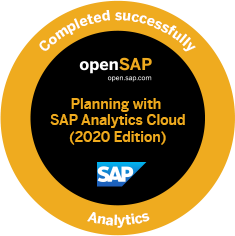- Aggregation Levels - They contain the fields that are used for planning. In other words, the aggregation level describes the planning granularity. All aggregation levels in our SAP BPC Optimized for SAP S/4HANA content refer to the delivered content MultiProviders. Aggregation levels are always the basis to create planning filters, planning functions, and input-ready queries.
- Administration (BPC Web client) - This carries out all kinds of administration, for example, model creation.
- A Composite Provider is an Info Provider that combines data from SAP HANA views or from other classic BW Info Providers by Join or Union, and makes the data available for reporting and analysis. Composite Providers can directly include HANA views. Modeling of a Composite Provider on top a HANA view enables you to define reporting on top of a mere SAP HANA object.
- Driving Dimension - The driving dimension is used to look up the owner and reviewer for the activity. So for this field, the owner and reviewer property have to be maintained. The characteristic you select here (like cost center) is the characteristic for which the business process flow status can be set, that is, upon which you execute status monitoring. So if you select the cost center field with 20 characteristic values, you can check the status for each of the 20 cost centers.
- Environment (BPC) - An environment is a virtual concept. It is a container that can contain several planning scenarios (models). The creation of an environment is always done through the BPC Web client home page. Choose the link to the right of the Environment field. It's not possible to copy an environment in Embedded or Optimized Planning.
- Filter (Planning function) - A filter refers to the characteristics of the related aggregation level, for example, to the cost center characteristic. You use the filter to set selections for these characteristics. So the filter describes the data sets for which the planner can plan. Normally, variables (mostly exit variables) are selected in a filter. A filter can be used in an input-ready query as a filter in the filter section of the query, as well as selection for execution of a planning function.
- Library (BPC Web client) - This creates web input forms on top of input-ready queries.
- My Activities (BPC Web client) - This provides access for end users to the business process flow.
- Planning Function - A planning function can only be created for an aggregation level and contains a calculation specification for data manipulation. Copying and revaluation are the most frequently used planning functions.
- Planning sequences - Planning sequences can contain one or several planning functions. The advantage of a planning sequence, among others, is that all the contained planning functions are executed by choosing one button in the front end instead of choosing one button for each planning function.
- System Reports (BPC Web client) - This contains all delivered system reports.

